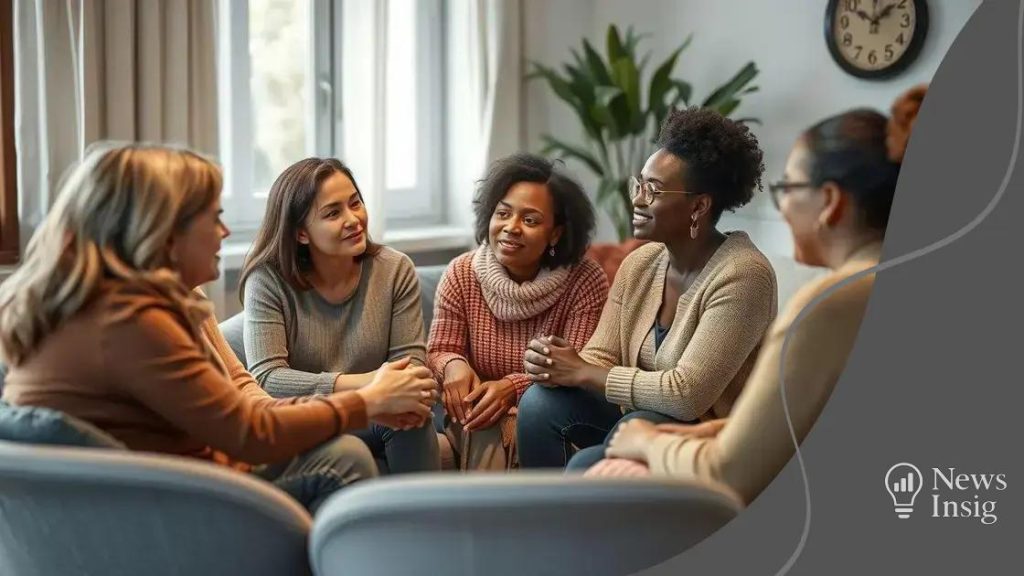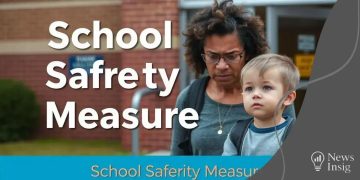Domestic violence support: find help now

Anúncios
Domestic violence support includes resources like shelters, crisis hotlines, counseling services, and support groups, which are essential for empowerment and healing for victims seeking safety and recovery.
Domestic violence support is vital for individuals facing challenging situations. Have you or someone you know ever felt trapped or unsure where to turn? In this article, we will explore the resources available to help navigate these difficult times.
Anúncios
Understanding domestic violence
Understanding domestic violence is the first step towards breaking the cycle of abuse. It can occur in various forms, often leaving victims feeling isolated and helpless. Recognizing the signs and understanding the dynamics involved is crucial for intervention and support.
What is Domestic Violence?
Domestic violence is a pattern of abusive behavior in a relationship that is used by one partner to gain or maintain control over another intimate partner. This can include physical aggression, emotional manipulation, and other forms of coercive behavior.
Forms of Abuse
Anúncios
Domestic violence is not always just physical. There are several types, including:
- Physical Abuse: Hitting, slapping, or any form of physical harm.
- Emotional Abuse: Undermining a person’s sense of self-worth or emotional well-being.
- Financial Abuse: Controlling a partner’s access to financial resources.
- Psychological Abuse: Using intimidation, threats, or isolation to exert power.
Every form of domestic violence can leave lasting effects on victims. It’s essential to understand that help is available, and breaking the silence around this issue is vital.
Recognizing the Signs
Many individuals may not even recognize when they are victims of domestic violence. Key signs include a partner who makes you feel afraid, controls aspects of your life, or humiliates you. If you feel constantly on edge or walk on eggshells to avoid conflict, it could be a sign of an unhealthy relationship.
Understanding these behaviors can empower victims to seek the support they need. If you or someone you know is experiencing domestic violence, it’s important to reach out for help.
Recognizing the signs of abuse
Recognizing the signs of abuse is crucial for anyone who may be experiencing or witnessing domestic violence. Awareness can lead to timely intervention and support for those involved. Understanding these signs is the first step in taking action.
Physical Signs
Physical abuse often leaves marks that can be seen. Individuals may show:
- Bruises, cuts, or frequent injuries.
- Signs of being restrained.
- Wearing clothing that doesn’t match the weather, like long sleeves in summer, to cover injuries.
These signs can indicate a pattern of domestic violence that should not be ignored. Even subtle changes in physical appearance deserve attention.
Behavioral Signs
Behavioral changes can also be strong indicators of abuse. Someone might become:
- Withdrawn or increasingly anxious around their partner.
- Suddenly isolated from friends and family.
- Excessively apologetic, even for small mistakes.
These changes can signal that someone is experiencing emotional or psychological abuse. Understanding these behavioral cues is important for helping loved ones seek the support they need.
Another key sign to look out for is the language used when discussing their partner. If a person always speaks negatively or in fear of their partner, this could indicate an unhealthy relationship dynamic. It’s essential to approach these situations with compassion and understanding.
Verbal and Emotional Signs
Sometimes, abuse isn’t physical. It can be verbal or emotional. Pay attention to:
- Constant criticism, belittling remarks, or insults.
- Threats of self-harm or suicide as a way to manipulate you.
- Gaslighting, making someone doubt their reality or sanity.
The impact of verbal and emotional abuse can be extremely damaging, often leading to long-term psychological issues for the victim. Recognizing these signs early could help break the cycle of abuse.
Available support services

When dealing with domestic violence, knowing the various support services available can make a significant difference in a victim’s life. These services are designed to help individuals regain control and find safety.
Shelters and Safe Houses
One of the most immediate forms of assistance comes from shelters and safe houses. These facilities provide a safe environment for those fleeing abusive situations. They often offer:
- A temporary place to stay, ensuring safety and security.
- Access to emergency services and basic needs like food and clothing.
- Support services including counseling and legal advocacy.
By offering a secure haven, shelters allow individuals to plan their next steps without the fear of being harmed.
Crisis Hotlines
Crisis hotlines are another essential resource for victims of domestic violence. These services provide immediate support and guidance. Some key features include:
- 24/7 availability to provide help at any time.
- Anonymity and confidentiality for those seeking help.
- Connections to local resources and services tailored to individual needs.
Making a call to a crisis hotline can be a critical first step towards seeking help and empowerment.
Counseling and Legal Assistance
In addition to immediate shelter, counseling and legal assistance play vital roles in recovery. Counseling services can offer therapeutic support to help individuals process their experiences. Legal assistance may include:
- Guidance on obtaining restraining orders against abusers.
- Help in navigating custody issues and child protection.
- Support in accessing financial assistance and housing resources.
Both counseling and legal services empower individuals by providing knowledge and tools needed for recovery.
It is crucial for those affected by domestic violence to understand that they are not alone. With the right support services, healing and rebuilding a life free from abuse is possible.
How to create a safety plan
Creating a safety plan is essential for anyone facing domestic violence. A safety plan helps you prepare for an emergency, ensuring you know what to do and where to go if you need to leave your situation quickly. It is vital to have a clear strategy in place.
Identify Safe Locations
The first step in your safety plan is identifying safe places. Consider places you can go when you feel threatened. This can include:
- Friends’ or family members’ homes.
- Local shelters or safe houses.
- Public places where you feel secure, like libraries or community centers.
Having several alternatives allows for a quick exit if necessary.
Pack a Go-Bag
Creating a go-bag is a smart move. Pack essential items that you’ll need if you must leave quickly. Include:
- Clothing for a few days.
- Important documents like identification and medical records.
- Cash and necessary medications.
Keep this bag in a safe but accessible location where you can grab it quickly during an emergency.
Establish a Communication Plan
It’s helpful to have a safety plan for communication. Decide how and when you will contact someone for help. This could involve:
- Designating safe contacts who understand your situation.
- Setting up code words to signal when you need help.
- Using secure messaging apps for discreet communication.
Communication is vital in keeping you connected with those who can assist you.
A safety plan should also include steps for what to do if you have children. Make sure they know the plan and understand where to go and how to reach help. Teaching children basic safety measures can empower them to act when needed.
Maintaining a safety plan is about preparation and awareness. Regularly review and update the plan as situations change. Being proactive can significantly increase your safety in times of crisis.
Resources for empowerment and healing
Resources for empowerment and healing play a crucial role in the recovery process for individuals affected by domestic violence. Accessing these resources can significantly enhance one’s ability to regain control over their life.
Support Groups
Joining support groups can be incredibly beneficial. These groups create safe spaces for individuals to share their experiences and emotions. Benefits of support groups include:
- Peer Support: Connecting with people who understand your situation fosters a sense of belonging.
- Shared Knowledge: Learning from others’ experiences can provide new perspectives and coping strategies.
- Emotional Healing: Talking about experiences helps in processing emotions and reduces feelings of isolation.
Support groups help build a community of hope and resilience, essential for moving forward.
Therapeutic Services
Therapeutic services such as counseling or therapy offer another layer of support. These services can help individuals process trauma, develop coping skills, and rebuild self-esteem. Some effective approaches include:
- Individual Counseling: Provides a safe space to explore personal experiences and feelings at your pace.
- Group Therapy: Facilitates shared healing experiences and strengthens feelings of empowerment.
- Trauma-Informed Care: Focuses on understanding the impact of trauma to promote healing and growth.
Engaging in therapy can be a transformative experience, allowing individuals to heal and grow.
Educational Workshops
Participating in educational workshops equips individuals with knowledge and skills for empowerment. Workshops often cover important topics, including:
- Building Self-Esteem: Activities that promote self-worth and confidence.
- Financial Literacy: Understanding finances to foster independence and security.
- Legal Rights: Educating about legal protections available for victims of domestic violence.
Knowledge is power, and these workshops can provide the tools necessary for effective decision-making and independence.
It’s essential to recognize that healing is a journey. Utilizing available resources can significantly support empowerment and lead to a fulfilling life post-abuse. Anyone experiencing domestic violence deserves the opportunity for healing and a brighter future.
In summary, seeking help and understanding available resources is critical for anyone facing domestic violence. By recognizing the signs of abuse, creating a safety plan, and utilizing support services, individuals can regain control of their lives. Empowerment and healing are possible, and it’s essential to take one step at a time towards recovery. Remember, you are not alone, and help is available.
FAQ – Frequently Asked Questions About Domestic Violence Support
What should I do if I think I am experiencing domestic violence?
It’s important to recognize the signs and seek help. Consider reaching out to a trusted friend, family member, or a crisis hotline for immediate support.
How can a safety plan help me?
A safety plan provides a personalized strategy to ensure your safety in dangerous situations, including identifying safe places and packing essential items.
Are there support services available for domestic violence victims?
Yes, there are many support services such as shelters, counseling, and hotlines specifically designed to assist victims of domestic violence.
How can support groups help with recovery?
Support groups provide a safe space to share experiences, learn from others, and build a community that fosters healing and empowerment.





